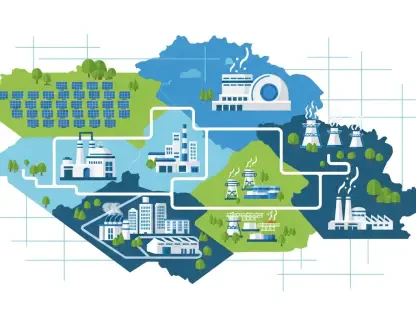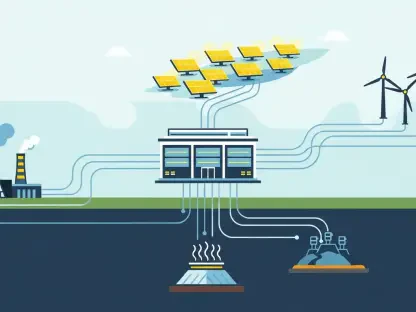California has long been a leader in championing environmental initiatives, often acting as a blueprint for other states with its comprehensive climate goals and innovative energy strategies. However, recent budgetary decisions cast uncertainty on the state’s ability to maintain its progressive stance, highlighting a critical challenge: effectively balancing fiscal constraints with ambitious environmental objectives. With an approved budget cutting key funding for programs designed to ensure grid reliability, California now faces tough decisions. Over the next several months, experts and policymakers will likely deliberate on how to reconcile these competing needs without sacrificing essential climate goals.
Economic Context and Policy Decisions
Impact of Budget Cuts on Grid Reliability Measures
California’s recent budget decisions have sparked significant debate regarding the impact on grid reliability measures amidst environmental pressures. Governor Gavin Newsom signed legislation approving a $321 billion budget, which notably cuts $18 million from vital programs like Demand Side Grid Support (DSGS). These measures are instrumental in managing energy resources, especially during extreme weather events that threaten grid stability. The reduction in funds comes at a time when the state grapples with unpredictable climate patterns, emphasizing a pressing need for strong energy management solutions. As heat waves persistently challenge the state, the ability to maintain grid reliability becomes increasingly critical.
Further complicating matters, pending decisions regarding the Greenhouse Gas Reduction Fund and voter-approved climate bonds inject uncertainty into the future of clean energy progressions. These financial vehicles play a pivotal role in supporting the state’s environmental goals, aimed at curbing greenhouse gas emissions and fostering resilience against climate adversities. Postponing a reassessment of these funds leaves a gap in strategic planning, prompting concerns among clean energy advocates. This deferral not only impacts immediate economic management but risks undermining long-term ecological investments critical for California’s climate agenda.
Uncertainty Surrounding Clean Energy Programs
As California confronts tight budgetary conditions, uncertainty looms over the future of clean energy programs foundational to its environmental stability. Advanced Energy United, a trade association encompassing diverse sectors, voiced their concerns about the diminishment of essential initiatives designed to stabilize the state’s energy through sustainable solutions. Their advocacy for enhanced program support underscores the vital role these initiatives play in facilitating California’s transition toward a cleaner energy infrastructure capable of sustaining grid resilience under fluctuating ecological conditions. Reduced funding raises questions about the state’s capacity to respond effectively to intensifying heat waves and sudden environmental disruptions.
Kate Unger from the California Solar & Storage Association echoed similar sentiments, emphasizing the potential deterrence of participation due to funding ambiguities. As extreme weather conditions become more frequent, the expansion of clean energy programs becomes crucial. The shift away from scaling these measures jeopardizes the state’s preparedness, risking setbacks in achieving climate objectives. Moreover, fiscal pressures have initiated discourse around state-level implementation adjustments, highlighting the challenge of fostering innovation within a constrained budgetary framework. The current situation amplifies existing tensions between environmental commitments and economic prudence.
Broader Landscape of Energy Policy
Federal Influences on State Energy Policy
Within the broader landscape of energy policy, California’s challenge is complicated by federal influences affecting state-specific initiatives. Governor Newsom attributes some of California’s financial hurdles to policies introduced by former President Donald Trump, suggesting inconsistencies in market conditions have contributed to economic disruption. At a national level, conversations around balancing environmental agendas with fiscal responsibilities have intensified, influenced by budgetary constraints and economic uncertainties. Federal policies and their fluctuating support for energy programs have direct implications for states striving to advance their climate goals, posing a risk of misalignment in achieving nationwide environmental ambitions.
Advanced Energy United highlights the withdrawal of federal support as a significant factor impacting California’s ability to uphold grid reliability and climate initiatives. Advocacy for bolstered state-level commitments reflects a strategic approach to counterbalance national uncertainties, ensuring continued progress regardless of federal shifts. This discourse underscores the importance of maintaining an adaptive, responsive policy environment, able to address transitional complexities inherent in evolving energy landscapes. Strengthening localized energy strategies in the face of limited federal backing becomes imperative for safeguarding California’s climate resilience.
Implications for Nationwide Energy and Climate Strategies
California’s budgetary adjustments reverberate beyond state lines, potentially influencing nationwide energy and climate strategies. The discourse mirrors national conversations centered around the equilibrium between economic management and ecological commitments, prompting states to evaluate their roles in environmental advocacy under fiscal pressures. The outcomes of California’s budget decisions may serve as a reference for other jurisdictions grappling with similar dilemmas. As states strive to balance financial realities with environmental imperatives, California’s experience provides insights into policy adaptations necessary for achieving sustainable outcomes while navigating economic uncertainties.
The sentiments expressed by environmental advocates underscore a broader concern regarding the potential weakening of clean energy programs pivotal to comprehensive climate agendas. California’s leadership in pioneering cleaner energy solutions offers a continuing model for states aspiring toward robust ecological outcomes. With focused strategic planning, informed by lessons from California’s current fiscal landscape, states can illuminate pathways to effectively bridging economic constraints and environmental goals. The adaptation and refinement of energy strategies are crucial, enabling cohesive progress amidst fiscal challenges and climate realities.
Navigating Future Budgetary and Environmental Challenges
Strategic Decision-Making for Sustainable Outcomes
As California navigates the intricate balance between financial constraints and environmental priorities, strategic decision-making becomes central to realizing sustainable outcomes. Aligning budgetary actions with climate objectives requires careful evaluation of program impacts, considering both immediate needs and long-term goals. Policymakers must weigh the benefits of resource allocation against potential drawbacks, ensuring robust support for initiatives that enhance grid reliability and foster clean energy adoption. Transparent, informed decisions can facilitate effective integration of fiscal responsibility within environmental agendas, supporting resilience against fluctuating ecological conditions.
Recognizing the vital role of clean energy measures in shaping California’s future, strategic planning will require collaboration across sectors, leveraging expertise to navigate complexities and optimize resource distribution. Engaging stakeholders in the dialogue can enrich policy discussions, introducing diverse perspectives essential for fostering innovation within budgetary constraints. While economic prudence guides funding considerations, continuous advocacy for robust climate commitments ensures progress toward the state’s comprehensive environmental objectives. Implementing adaptive strategies to enhance California’s energy landscape will strengthen its capacity to address evolving fiscal and ecological challenges.
Advancing California’s Climate Leadership
California has consistently set the pace in promoting environmental programs, often serving as an example for other states with its thorough climate goals and forward-thinking energy plans. This leadership, however, is now at a crossroads due to recent budget cuts that pose a challenge to its progressive approach. As the state grapples with these changes, it highlights a pressing issue: the need to balance financial limitations with its ambitious environmental targets. The newly approved budget slashes essential funding for programs that are vital for ensuring grid reliability, placing California in a position where tough decisions are necessary. Over the coming months, experts and lawmakers are expected to engage in in-depth discussions on how to navigate these conflicting demands, ensuring that the state’s essential climate objectives are not compromised. The challenge lies in reformulating strategies to meet these environmental aspirations while considering fiscal prudence, striving for a future where economic restraints do not impede critical green advancements.









